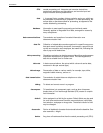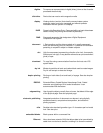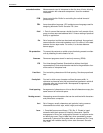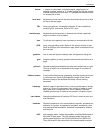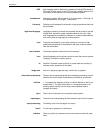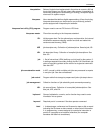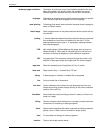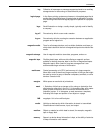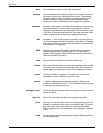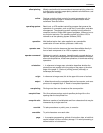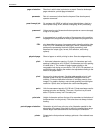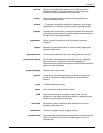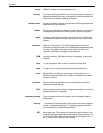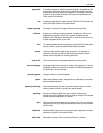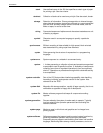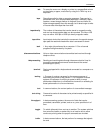
GLOSSARY
GLOSSARY-14 XEROX DOCUPRINT 96/DOCUPRINT 96MX LPS SYSTEM GENERATION GUIDE
menu List of available functions, commands, and options.
message Unit of information transmitted by one facility to another in a form that
the receiving facility can understand and act upon. The standard
message format consists of a header (containing identifying and
control information), followed by the actual message content,
followed by a trailer (indicating that the message is completed).
metacode Same as “native mode.” The method of speaking to and controlling
the image generator. These controls are used by the character
dispatcher to generate scan line information. This information is sent
in the form of character specifications to the image generator, which
uses it to compose the bit stream that modulates the laser.
MHz megahertz. 1. Unit of cycling speed (one million cycles per second)
for an electromagnetic wave (in particular, a radio wave). 2. Sending
and receiving stations of a radio wave transmission must be tuned in
to the same unit of megahertz.
MICR Magnetic Ink Character Recognition. MICR allows a computer to
read characters printed in special metallic ink by scanning the
shapes of their magnetic fields. MICR fields are often imprinted on
bank checks before processing.
mode Manner in which an activity or process is carried out.
modem Device that converts digital information into an analog signal suitable
for sending over analog telecommunication lines. Also converts an
analog signal from telecommunication lines into digital information.
module Cohesive unit within a program. It is consistent in its level and
identifiable in terms of loading or with other units.
network 1. System of geographically separate computers, linked to one
another over transmission lines. 2. Communication lines connecting
a computer to its remote terminals.
nonimpact printer Printer that forms characters without any strikes of a key or element
against the paper.
object file Source file converted into machine language (binary code).
offline Devices not under the active control of a central processing unit. For
example, a computer makes output to a magnetic tape. The tape is
then used by an offline printing system to produce printed data.
Offline operations are much slower than online operations. See also
online.
offset To place pages currently being printed in slightly different positions
from previous pages.



